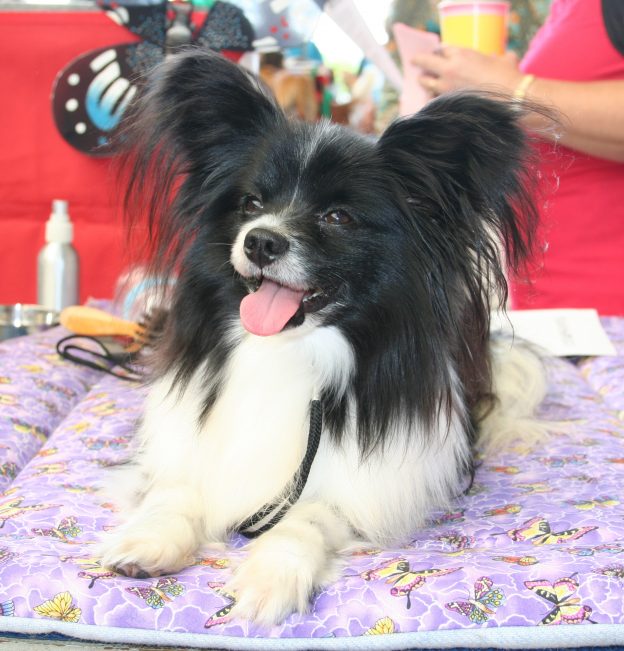
With ears reminiscent of butterfly wings, the lovely Papillon has certainly earned its name.
Originating in Europe around the 17th century as a companion dog, the Papillon (pronounced ‘pap-e-on’) had many admirers including Marie Antoinette, the Queen of France. These days the Papillon is found in countless homes around the world and with its happy disposition, alert expression and keen attitude wrapped into such a small, pretty dog, it is easy to see why.
Jean Rimmer of the Papillon Club of NSW Inc has loved the breed for many years and has been breeding Papillons since 1974. “Papillon is French for butterfly and the Papillon is always on the move, flitting from place to place,” she says. Papillons crave human attention and are great for people who enjoy spending time with their dogs. “The ideal owner is a caring, gentle person who is willing to have their Pap as part of their family,” Rimmer says.
The breed makes a lively companion, adds Rimmer, but due to their small size, Papillons are better suited to families with older children.
“I personally prefer them not to be with children under about 10 years of age,” she says, “as I find that children any younger are inclined to drop small dogs and the possibility of injury is rather high. But, having said that, there are exceptions with children who have been raised with dogs and who understand the proper way of handling such small dogs.”
Family ties
A devoted family member, the Papillon enjoys spending time with the family, whether that be watching TV, going for a walk or playing in the yard. It is a small, dainty dog but is also alert and lively, and loves getting out and about with the family.
“They do like going for walks and playing ball in an enclosed yard,” Rimmer says. However, they will not take kindly to being left alone in the backyard for long periods of time and must be allowed in the house with the family. Being an intelligent breed and willing to please, they can be lead and house trained quite quickly. Given positive, fun training, they can also excel at obedience. Williams adds that the breed also competes well in agility and flyball.
A big dog in a little dog’s body, the Papillon is not aggressive but will keep a lookout for strangers and alert his family if there is anything unusual happening on his property. “They are very alert and will soon let you know if there is someone around who should not be there,” Williams says.
Pretty butterfly
Papillons are not only alert, friendly, intelligent and beautiful-looking dogs, their long silky coats are relatively easy to maintain. They have no undercoat and possess little to no doggie odour, making them the perfect small house dog. “There is not a lot of grooming involved,” says Rimmer, “perhaps a good weekly brush to make sure there are no knots in their coats or ear fringing.”
For a small, dainty dog the Papillon is quite robust, but like most breeds can suffer from certain hereditary problems. “You may occasionally come across a Pap with slipping patellas,” warns Rimmer, “but as a rule a majority of the registered breeders these days are very careful about their breeding programs and would not consider breeding with any affected stock.”
If you are interested in adopting a Papillon, research the breed further by speaking to registered breeders or local breed club representative or visit some conformation/agility/obedience shows in your area.
If you do decide the Papillon would be perfect for your family and lifestyle, remember to treat your dog with love and kindness and you will have a charming companion for life.
For more information
Breed Club of NSW
Breed Club of Victoria




